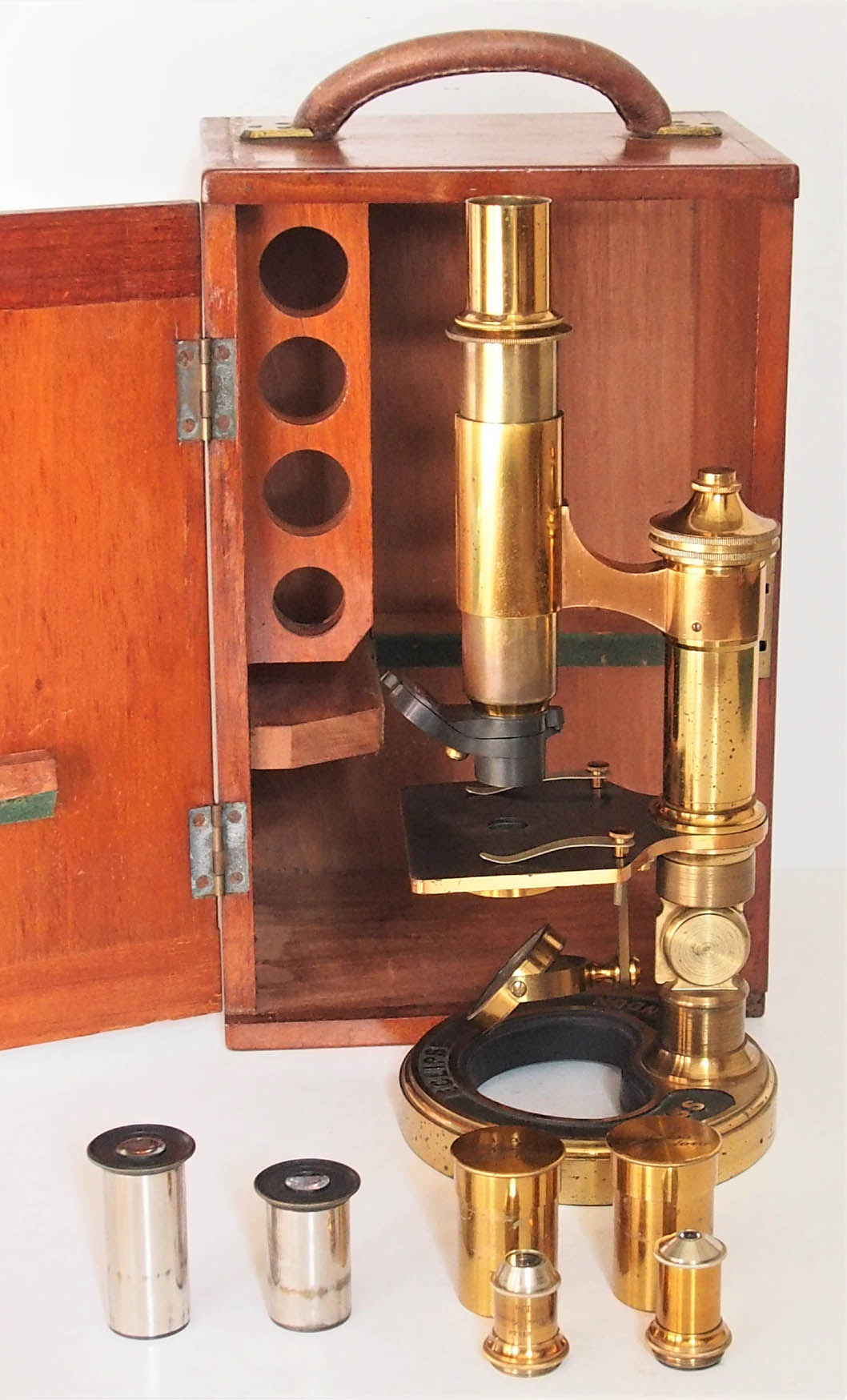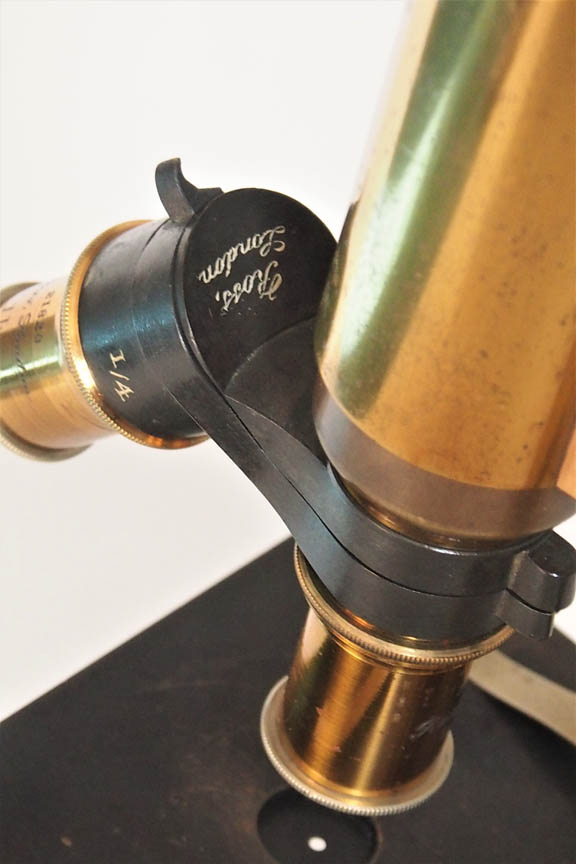| DESCRIPTION | HISTORY |
Please Click On Any Picture for a Larger Version
Eclipse, Ross, London, and carries serial number 5499, dating its manufacture around 1885. The heavy circular ring base is 120 mm in diameter,and supports a circular limb with a hinged joint 45 mm above the base, allowing for the microscope body to be inclined. The ring foot has three areas that protrude downwards to form a tripod support. The stage plate encircles the limb and underneath carries a disc with 3 different apertures, in addition to a short brass sleeve for receiving understage accessories like a polarizer. The use of a condenser with the supplied concave mirror would be problematic. The gimbal for the single sided concave mirror is screwed to a swinging tail piece, which allows for oblique lighting of the specimen. The 166 mm tall brass pillar has a milled-head fine adjustment at the top, and an arm with a sprung casing, into which the 115 mm long tube slides. This is fitted with a drawtube, by which means the tube length can be increased from 155 to 210 mm. This tube admits eye pieces of continental diameter(23.2 mm).


Ross, Londonand at one end is marked
1/4, this side being somewhat longer, so that the 1 inch and 1/4 inch objectives are always at a parfocal distance from the slide, which is held on the stage by two stage clips.
21820,Ross,London, 1 In., and
21841,Ross, London, 1/4 In.. These have approximate numerical apertures of 0.20 and 0.56 respectively.
Diatom-dotters). Advances in science, however, resulted in a vast increase in the professional use of the microscope by medical students, scientists, and specialist workers in all fields of industry. Their needs proved to be quite different from the earlier amateurs; they were usually content with objectives of a lower aperture, with a stand which was more manageable, and most importantly with an instrument which was reasonably priced. It was this, in addition to the adoption to modern manufacturing methods which lead to the adoption of the Continental model of microscope. European manufacturers such as Leitz and Zeiss had built their success on this model, but the English microscope makers were slow to follow. Some firms such as Watson and Beck made a successful transition, and managed to stay in business, whereas for others, such as Powell & Lealand, this was the end of the road.
Anglo-Continentaldesigns. Some of these were designated their Eclipse models, of which examples are known with either a horse shoe- or large ring-shaped foot. The 15th edition (1898) of Hogg, The Microscope contains a description of this model:
A further source of congratulation is that economy has all along been studied; so much so, that the instruments in question are within the reach of persons of moderate means. Messrs. Ross and Co. have taken a new departure in this respect, and theirIt appears, that different versions of this model were made; some have rack-and- pinion coarse adjustment, whereas more economical examples feature sliding tube coarse focusing, or a rigid limb, without the inclining joint. Ross were obviously not very successful in this competitive environment, as by 1906, they were no longer making microscopes, and instead continuing with the manufacture of camera lenses.EclipseMicroscope is an entirely new form of stand with a ring foot. This microscope has been produced for the especial use of students, and can be purchased at a moderate sum. It will be seen at a glance how steady this form of stand must neccessarily be, since the level of gravity is secured in every direction and inclination. The body-tube carries eye-pieces, numbered, the Continental size and optical tube-length (160 mm), for which object-glasses are adjusted, and a draw-tube extending to eight inches. The fine adjustment is independent of set screws, and not subject to derangement. It is extremely sensitive and direct in action, and from its construction is equal in perfection of working to the best that can be made. Its fitting, by a new contrivance, is completely covered at all points, being thus preserved from disturbance or injury by dust. The Eclipse is furnished with two eye-pieces, 1" and 1/4" object glasses of highest excellence and large angular aperture, both adjusted to a double nose-piece, so that they focus in the same plane...and a swinging mirror and stage iris diaphragm.